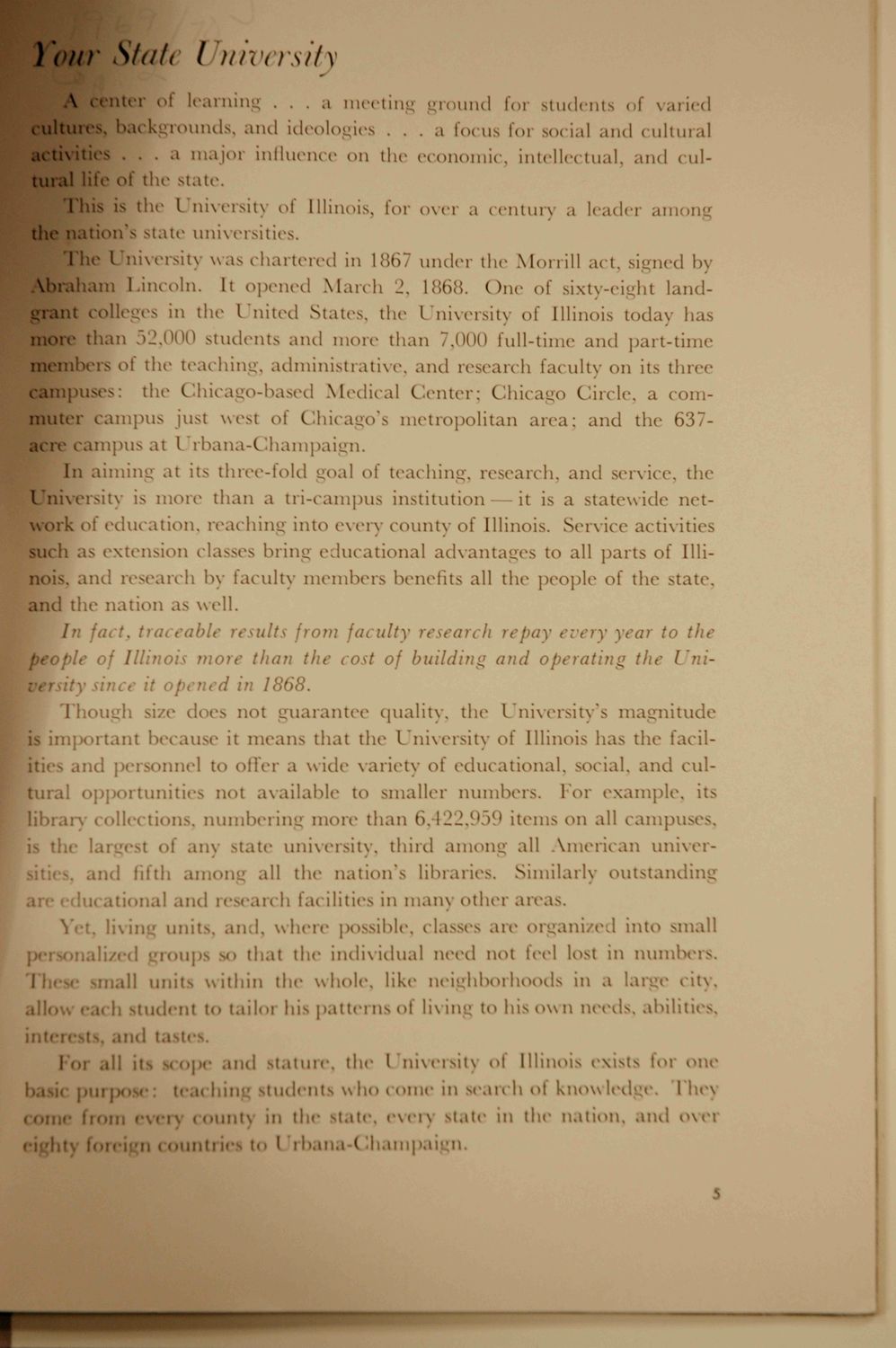| |
| |
Caption: Booklet - Admissions Requirements (1969)
This is a reduced-resolution page image for fast online browsing.

EXTRACTED TEXT FROM PAGE:
Your State I diversity \ nter < learning . . . a meetin und for students of varied ultui bark rounds, and ideologies . . . .1 focus foi social and cultural ' tit . . a major influence < n the economi< intellectual, and cul< tural life thr state. This is the University of Illinois, for over a century .1 leadei among tl ation's tate universities. The I niversitj was chartered in 1867 under the Morrill act, sign ! I>\ Abraham Lin< In. It opened March 2, 1868. One of sixty-eight landmt llrurs in the United States, the University of Illinois today lias 1 than 52,000 students and more than 7.000 full-time and part-till* 1 ibers of the teaching, administrative, and research faculty on its thr< mipiisc the Chicago-based Medical Center: Chicago Circle, a commuter campus just west oi Chicago's metropolitan area; and the 637tmpus at I rbana-C lhampaign. In aiming at its three-fold goal ^i teaching, research, and service, the University is more than a tri-campus institution — it is a statewide net\ rk > education, reaching into even county of Illinois. Service activity t 5 1 h as extension classes bring educational advantages to all parts of Illi1 nois md 1 seai h by faculty members benefits all the people of the state, id the nation as well. In fait, traceable results from faculty research repay every year to th< people of Illinois more than the cost of building and operating the I'niI in 1868. Though si; d 3 not guarantee quality, the I niversity's magnitude nportant 1 it means that the University of Illinois has the faeilit: id ; aiel to oiler a wide variety oi educational, social, and culti; 1 o] >rtunities not available to smaller numbers, l o r example, itlib: tions, nnml rin more than 122,959 items on all campuses, the I. t of an\ university, third among all American univerI tilth anion 1 the nation's libraries. Similarly outstanding 1 >nal and n h facilities in man\ other areas. Y !iviii unit when possible, classes .ire organized into small "\/ ups that the individual need not feel lost in numben : I, II units within the wholi Iik< neighborhoods in a lai t\ h udeni t > tailoi his patterns of Ii\ it t > his own needs, abilities, < < ii md tastes. i - Foi all its ««•; m.i M i i i P the I n i \ e i s i t \ >>t I l l i n o i s e x i s t s foi one pun 1 bin students who >mc in search of knowiedi fhe> u even urn in th< I tte, even ite in the nation, and over •1 ( ounti Url n.i ( hampaiun. 5
| |